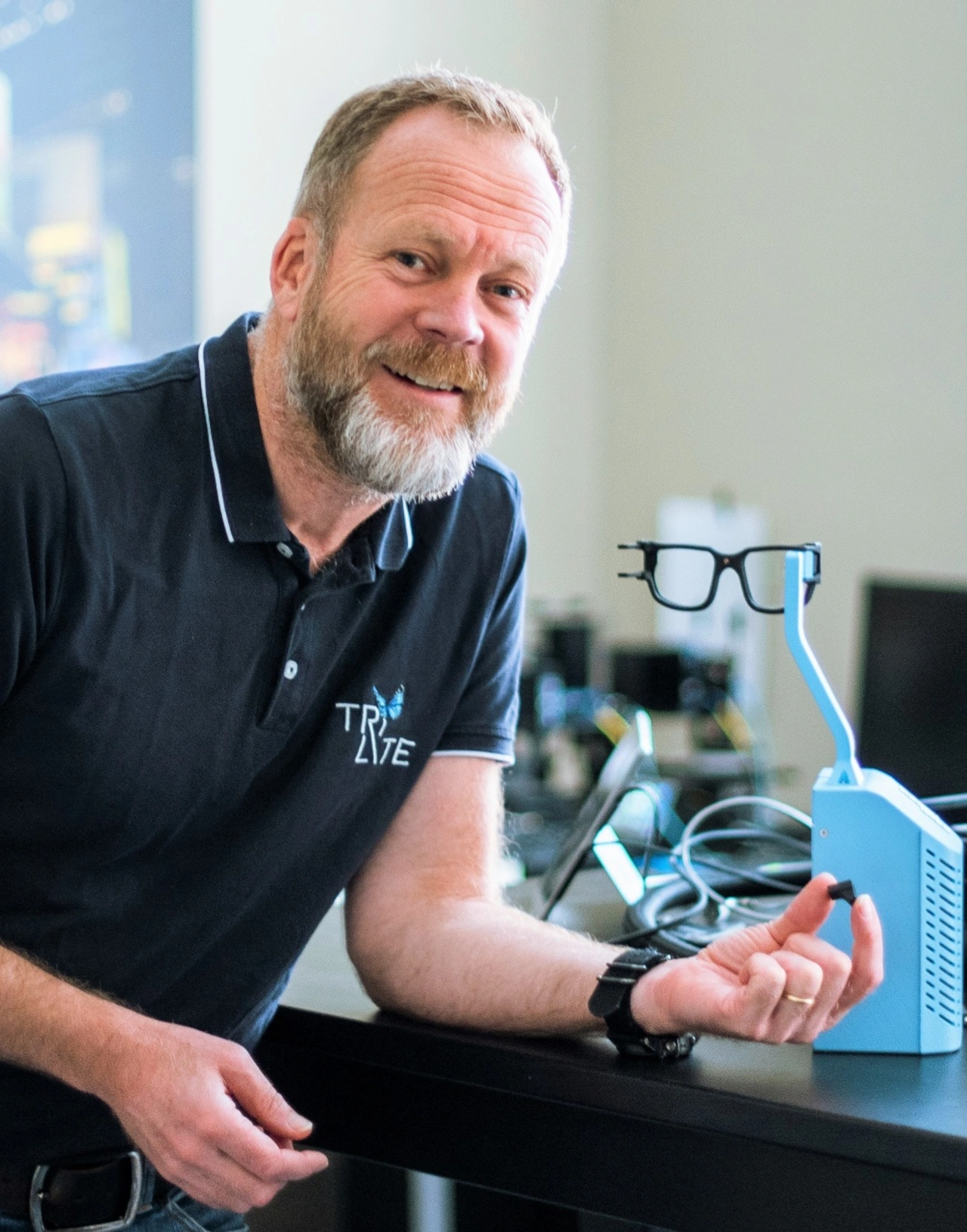The Apple-ams-OSRAM Breach:
Is MicroLED Technology Now Dead?
What impact will the fact that Apple has terminated its cooperation with ams OSRAM have on microLED technology? Is this a serious blow for microLED technology as a whole, is it even dead?
For ams OSRAM, it looks that way. The company was thunderstruck by Apple's sudden decision on Wednesday last week. "We are in shock," explained CEO Aldo Kamper and CFO Rainer Irle during an emergency press conference. There had been good progress on a technical level, and Aldo Kamper was at a loss to explain Apple's sudden change of heart.
Apple's move likely signals to microLED proponents that the technology won't penetrate the consumer market as rapidly as anticipated. Yole Group analysts report that Apple has dismissed most of its microLED project team, about 350 employees, after having invested roughly $3 billion into the technology. Over the years, it has become evident that despite considerable investment, microLED development has not progressed as hoped.
"At SPIE Photonics West in San Francisco late January, the once-prevailing microLED enthusiasm had significantly waned," said Peter Weigand, CEO of TriLite, a Vienna-based startup focused on laser beam scanning (LBS) technology for AR glasses, thus inherently skeptical of microLED.

Ulrich Hofmann, CEO of OQmented – also working on LBS technology – shared a similar sentiment. He witnessed strong demand for his company's systems at CES in Las Vegas earlier in January. Moreover, Meta's Reality Labs Optics and Display Research Senior Director Barry Silverstein suggested in a keynote that laser technologies have more potential than OLEDs, LCoS, or microLEDs.
Even microLED specialist Dr. Uwe Vogel, Head of Microdisplays & Sensors at the Fraunhofer Institute for Photonic Microsystems IPMS, noted the technology's immaturity, especially regarding high pixel densities and full-color capabilities, which result in low production yields that could take years to overcome. However, he affirmed that microLEDs could still be useful in specific applications, such as head-up displays in cars and airplanes and mobile micro-projectors.
MicroLEDs confront two principal challenges: the complexity of their manufacturing technology and high power consumption, particularly as pixels shrink.

Regarding Apple's intended use for the microLEDs that ams OSRAM was to manufacture, the initial target was the Smart Watch. Currently, these watches are outfitted with OLEDs, and Apple had planned to introduce microLED versions by 2024, then delayed to 2025, and again to 2026 – timelines that seem unlikely post-separation from ams OSRAM.
The advantage of microLEDs for watch displays lies in their high brightness, enhancing outdoor visibility and modest pixel density requirements. Nonetheless, production remains complex and costly, with OLEDs presenting a cheaper alternative.
The consumer market operates on a simple principle: if a product exceeds a certain price point, consumers will refrain from purchasing, regardless of its superior technical features. Apple may have anticipated that microLED prices wouldn't drop to an acceptable level for consumer devices in the foreseeable future, prompting their decision. According to Yole, OLEDs are progressing well, with Apple paying $40 for an OLED in advanced smartphones, while a microLED display for the Apple Watch still costs $85.
However, augmented reality (AR) glasses could represent a second opportunity for microLEDs. The vision is that AR glasses will become as commonplace as regular eyewear, contrasting with virtual reality (VR) glasses that immerse users in a synthetic environment. AR glasses enhance the real world with additional virtual information, which, according to analysts, could eventually supplant smartphones.
This would justify the billions of dollars that industry giants such as Apple, Google and Meta are investing in the development of microLED technology. At first glance, microLED technology would be just right for AR glasses - because of the high light intensity. Firstly, the AR glasses have to work outdoors in the sun, just like the watches. In addition, the virtual images have to be coupled into the lenses via so-called combiners and waveguides. "The approach primarily used today for combiners using waveguides, which offer many practical advantages for ergonomic eyewear optics, unfortunately leads to enormous optical losses, so that their optical efficiency is often only between 1 and 10 percent, so the displays have to be very bright in order to provide the viewer with recognizable images. Added to this is the limited energy efficiency of the microLED itself, especially with the very small pixels required for AR glasses," explains Dr. Uwe Vogel.
This means that the production technology is the first hurdle. This is because the pixel density must be very high so that the wearer of the glasses can see acceptable quality virtual images. The 200 ppi for the watches is nowhere near enough; it should be at least 1,000 ppi, preferably 3,000 or even 10,000. This means that a pixel should have a maximum area of 2 µm x 2 µm or 3 µm x 3 µm. However, the red, green and blue LEDs often have to be manufactured on different wafers. Removing them from the wafers and placing them on the glass substrate that forms the display is highly complex.
ProTec Carrier Systeme in Siegen has developed machinery for this transfer process, yet even their initial enthusiasm has waned. "Carrying out the transfer process with 1 to 2 µm accuracy is not currently economically viable. We are scaling back our pursuit of this project," shared CEO Sebastian Wagner with Markt &Technik. Consequently, Dr. Uwe Vogel concurs that there is still no established method for this process, and full-color generation is not yet economically competitive.
And as if that wasn't enough, there is a second hurdle to overcome. The smaller the pixels become, the more power they need to shine brightly enough. "This is because as the microLEDs shrink, the ratio of volume to surface area increases, which reduces the light intensity," says Peter Weigand. This means that the energy consumption of microLEDs increases with miniaturization - and this makes them less and less suitable for use in battery-powered devices such as AR glasses.
Uwe Vogel makes the following calculation: Due to the limited space available in the temples of the glasses, the capacity of the rechargeable battery must not exceed 1 Wh. However, the glasses should work for more than 12 hours on a single charge. Then the entire electronics of the glasses may only consume 20 mW and the display only 5 mW. "One supplier recently demonstrated a projection module for AR glasses with a waveguide combiner with three monochrome microdisplays (red, green, blue). However, the required microLEDs alone require 2.4 W at maximum luminous flux - a huge discrepancy," says Vogel. His conclusion: "microLEDs will not soon reach a technical and price level that would make them suitable for use in VR glasses - that still requires a lot of R&D."
Peter Weigand of TriLite and Ulrich Hofmann of OQmented, firms founded on the promise of LBS technology, naturally concur with these assessments.
TriLite's "Trixel 3" LBS projector, the world's smallest, with a volume under 1 cm³ and consuming less than 350 mW, brightly projects virtual images visible even in direct sunlight. This innovation garnered the prestigious Prism Award at the previous year's SPIE.
At this year's SPIE, OQmented reported on further advances in LBS technology. The company presented a new method that enables at least four wafers to be bonded on top of each other, allowing 1000 complete light engines to be manufactured at once. "The method, for which we have filed well over 20 patent applications, reduces the cost of producing the entire light engine by a factor of 10. We are also ahead of panel-based technologies at this level, which is not possible with panels," says Hofmann. OQmented also used a demonstrator at SPIE to show for the first time how several light engines can be "stitched" together to form an array. "This is particularly important for head-up displays and can be scaled as required, even up to cinemas and billboards."
Dr. Uwe Vogel from Fraunhofer IPMS is also working on an alternative: "We have developed a process that allows us to modify the microdisplay chips so that they become at least semi-transparent (currently around 25 percent), with prospects of 50 percent or even 75 percent. This means that the optical combiner can be omitted and the optical efficiency improves so significantly that the high luminosity of the microLEDs is no longer required. This allows us to return to the more cost-effective OLEDs as a light source, and the system as a whole becomes significantly more energy-efficient and enables wearable-compatible battery life," says Vogel. At this year's SPIE, the Fraunhofer IPMS was met with great interest.
So, is there a future for consumer-grade microLEDs, or are they now obsolete? Dr. Xioxo He, Research Director at IDTechEx, posits that the industry's reaction to Apple's withdrawal will be pivotal. While she believes further substantial investment could establish microLEDs, their survival may be confined to niche markets if funding wanes.
"Apple's retraction is a critical hit, though they maintain a small team for ongoing microLED research, possibly aimed at AR glasses," states the Yole Group.
For microLED start-ups, fundraising challenges loom large. Venture capitalists and investors might now question the wisdom of backing a technology Apple has deserted after a decade and $3 billion in investment.








